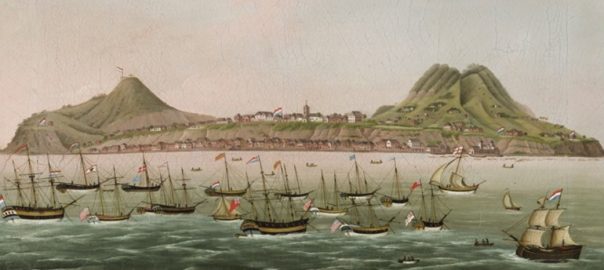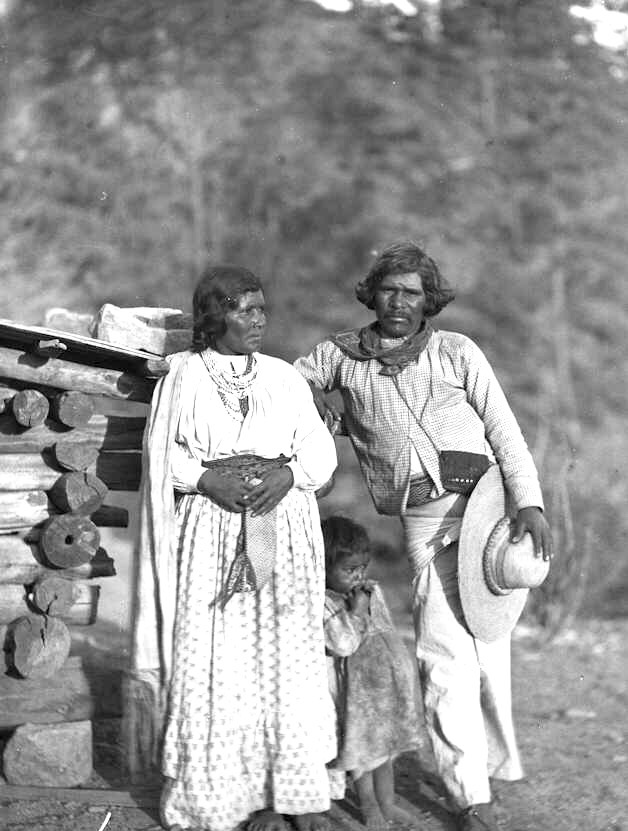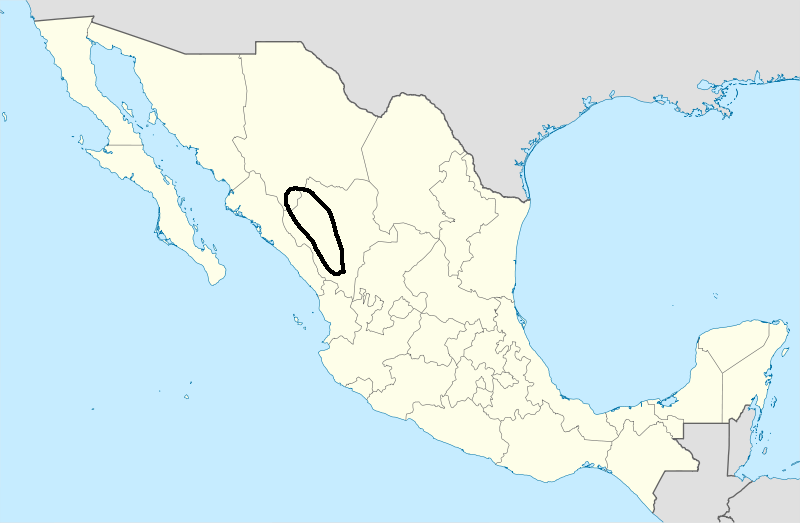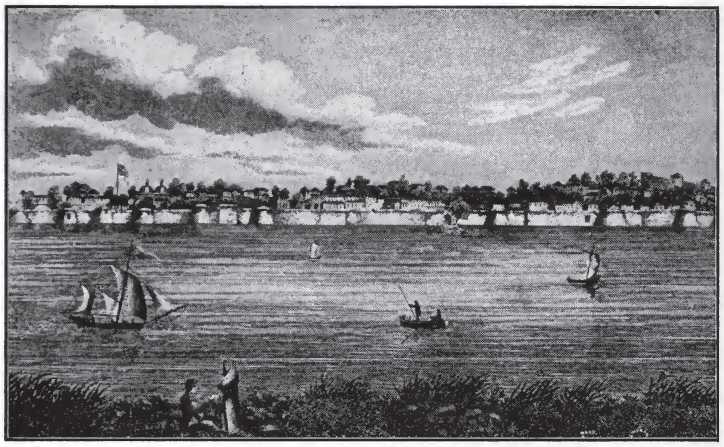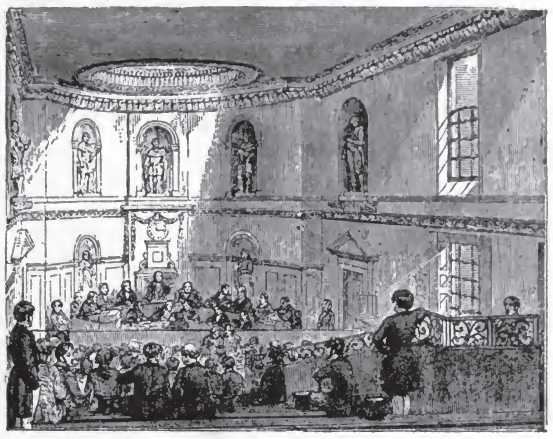The bulletin for 1616 CE was a little challenging to organize as there seem to have been unusually large numbers of developments relevant to our story of the birth and development of Western imperialism. But wrangling them all into something manageable was good practice for what is ahead. I shall present them as follows: (1) a couple of relevant short stories. (2) Portuguese empire news. (3) Spanish empire news. (4) Dutch empire news. (5) English empire news. Scroll on down to what interests you.
1. Short stories of 1616
** In 1616, Shah Abbas I of Persia captured Tbilisi in Georgia. He then fought an Ottoman army near Lake Gökçe and won.
** Dutch traders smuggled the coffee plant out of Mocha, a port in Yemen on the Red Sea, and cultivated it at the Amsterdam Botanical Gardens. Later, they started cultivating it at Java.
** The New England Indian smallpox or leptospirosis epidemic of 1616–19 began to depopulate the region, killing an estimated 90% of the coastal native peoples.
** A Portuguese slave ship carried smallpox from the Kingdom of Kongo to Salvador, Brazil.
2. Portuguese build settler-town in Brazil
The English may have been pushing the Portuguese empire out of Surat and other places in India, but in Brazil the Portuguese empire continued growing… In 1615, Portuguese captain-general Francisco Caldeira Castelo Branco of the captaincy of Bahia took a military expedition up the Amazon River from the Cabo do Norte in Grão Pará, to check the trading excursions of foreigners (French, Dutch, English) in the Amazon river system.
On January 12, 1616, Caldeira anchored in what is now known as Guajará Bay. Englishg-WP tells us he,
mistook the bay for the main channel, and thirty leagues (178 km) upstream, he built a wooden fort, covered with straw, which he called “Presépio” (nativity scene), now known as “Forte do Castelo”. The colony formed by the fort was given the name Feliz Lusitânia, “Happy Lusitania”. It was the embryo of the future city of Belém. The fort failed to suppress Dutch and French trading, but did ward off colonization.
Belém is the Portuguese word for Bethlehem. Today, it has a population of 1.5 million.
3. Tepehuán indigenes rise against ‘New Spain’ rulers
The Tepehuán people who live in today’s state of Durango, Mexico, are today in a very sad state. Though there are still a few thousand speakers of their native language, it seems to be dying out. This WP page on the Tepehuán Revolt that erupted in 1616 writes about the Tepehuán people in the past tense.
We learn that Spanish settlers started coming to these people’s region,
in the 1570s to mine silver and raise cattle. The Jesuits began missionary work among the Tepehuan in 1596, establishing missions… The Tepehuanes seemed relatively receptive to the missionaries, although they resisted living near the missions and working in Spanish mines and on haciendas, and often raided Indians friendly with Spanish. Nevertheless, by 1615, a Jesuit could declare that the Tepehuanes “showed great progress and were in the things of our holy faith muy ladino” (much like the Spanish).
Also this:
The Tepehuán suffered a series of devastating epidemics of European-introduced diseases in the years before the revolt. Epidemics were known to have occurred in their region in 1594, 1601-1602, 1606-1607, 1610, and 1616-1617. The Tepehuán and their neighbors may have been reduced in population by more than 80 percent by the epidemics, from a pre-Columbian population of more than 100,000 to fewer than 20,000, of which the Tepehuán may have been one-half of this total.
Then, this happened:
In 1616… a messianic leader named Quautlatas who had been baptized as a Christian, arose among the Tepehuán. Quaultlatas traveled throughout the mountains, his symbol a broken cross, preaching that the gods were angry because the Tepehuan had abandoned them and that they must kill or expel all Spaniards, especially the missionaries, from their lands. Quaultlatas’ appeal to his people blended Christian and Indian beliefs. He called himself a bishop and he promised that all those killed by the Spanish would rise again after seven days and that, after the Spanish were killed, the old gods would bless their land with good crops and fat cattle…
In attempting to explain the cause of the Tepehuán revolt the Jesuits denied any Spanish responsibility. Rather, they saw the Spanish impact as beneficial. “Ever since the Spanish settled here, there has been an abundance of food, clothing, riches, and other material comforts,” said the priest Andres Perez de Ribas. What the Jesuits did not see was the connection in the Indian’s mind between the arrival of the Spanish and death…
Well, the uprising inspired by Quaultlatas did not end well. The rebels continued fighting for four years. When their uprising had finally been suppressed, English-WP quotes a historian called Charlotte Gradie as estimating that “more than 200 Spaniards, 10 missionaries, an unknown number of Indians, Black slaves, and mestizos allied with the Spanish, and perhaps 4,000 Tepehuán had died…”
4. Dutch navigator pioneers a new route to the E. Indies
Until 1616, if a European trader or navigator wanted to sail between Europe and the “Spice Islands” of the East Indies, the only two reliable maritime routes were either (a) around the southern tip of Africa and across the Indian Ocean, or (b) across the Atlantic to Panama, then use porterage across Panama and use another boat from Panama or Mexico to cross the Pacific. The second of those routes was both clumsy and under strict control of the Spanish.
In 1616, a Dutch navigator called Willem Schouten figured he could sail fairly safely from Europe to the East Indies around the southern tip of South America– and then from there head almost directly across the Pacific to the East Indies. He wanted to explore the “Terra Australis” (Southern Land) that some European had caught vague glimpses of in the South Pacific. He did not actually get to what we now call Australia, though he did “discover” a number of South Pacific atolls along the way.
Since he was not sailing for the VOC on that occasion, he also wanted– on behalf of his investors– to find a route to the Spice Islands that could circumvent the VOC.
The VOC was not happy. When he got to Java, they arrested him.
5. Lots of developments for the English empire!
Settlers on Bermuda bring enslaved persons
The Bermudian tells us that, “In 1616, the first black man and a Carib Indian were brought to Bermuda on the ship Edwin to dive for pearls.” Then, in 1624, Robert Rich, “settled on the island where he directed the family’s slaves to farm tobacco on 600 acres of Rich holdings in Warwick Tribe. (By this time, slavery had become firmly entrenched in Bermuda.)”
East India Company tries to build a ‘Spice Island’ outpost
By 1616, the Dutch East India Company (VOC) was well established in the Spice Islands. 1616 saw a notable attempt by the English EIC to compete. Their chosen location was Run (also known as Pulau Run, Pulo Run, Puloroon, or Rhun — pulau is “island” in Indonesian.) This is one of the smallest islands of the Banda Islands, which are a part of today’s Moluccas, Indonesia. In the 17th century, it was considered to have of great economic importance because of the value of the nutmeg and mace that grew there.
English-WP tells us that in 1616, a small EIC fleet led by Nathaniel Courthope reached the island, “to defend it against the claims of the VOC” and persuaded the indigenes to sign a “contract” with the EIC and the English King. Some English explorers had possibly touched down on the island as far back as 1603 and it was based on that that the EIC now claimed it on behalf of the English.
Courthope must have known that the VOC would not be happy. He,
fortified the island by erecting forts to overlook approaches from the east, but lost two ships to mutiny and sinking by the Dutch, when they laid siege to the island. Courthope and 39 European defenders with their native allies held off the Dutch for 1540 days; however, after his death in a Dutch attack in 1620, the English departed the island. Finally in possession of Run, the Dutch proceeded to kill or enslave all adult men, exile the women and children and chop down every nutmeg tree on the island to prevent the English from retaking it. The VOC only allowed cattle to roam free on Run to provide food for the other islands.
I guess the indigenes had reason to fear the Dutch. But their English “allies” did not help them very much.
English nobility loves investing in imperial conquest!
In 1612, the EIC had opened its coffers to outside investors by opening the “First Joint Stock”, which had a term of four years, and ended up making for its investors a profit of “only” 87.5%. (Those figures and all the content of this section come from Ch. 3 of William Wilson Hunter’s 1907 book The European Struggle for Indian Supremacy in the Seventeenth Century, hereinafter WWH.)
WWH wrote (pp. 88- ) that the lasting achievement of the First Joint Stock had been,
the strengthening of our position not in the Eastern Archipelago, but on the west coast of India under the sanction of the Moghul emperor obtained by Sir Thomas Roe. In 1616, however, its credit stood high, and the expectations from the division of its profits still higher.
When, therefore, on the expiration of the four years of the First Joint Stock (1613–1616), the London Company resolved to open a new contribution for another four years, it was eagerly subscribed. The spirit of adventure among the English nobility and country gentry, which had found scope on the Spanish main under Elizabeth, but which the Spanish entanglements of James pent up, sought an outlet in the Second Joint Stock of the East India Company. Fifteen dukes and earls, thirteen countesses and ladies of title, eighty-two knights, judges and privy councillors, headed the list of 954 subscribers. The contributions amounted to £1,629,040, the largest capital that had ever been subscribed to any joint stock undertaking in the world. With this sum, to be divided into three voyages, it seemed as if the English Company might at length hold their own against Holland in the Eastern seas.
However, in the estimation of WWH, ever the convinced supporter of the English/British empire, the new infusion of capital was still not on its own capable of rendering the EIC effective at its empire-building task:
Both at home and in the East the English organization was inferior to the Dutch. The original weakness in the constitution of the London Company still rendered it unfit for great or permanent efforts. The “separate” voyages of 1601 to 1612 had indeed given place to recurring joint stocks. But the change only superseded temporary groups of adventurers for single voyages by somewhat less temporary groups of adventurers for three or four voyages. Each group, whether for a single voyage, or for three or four, knew that its existence was limited to a brief term of years. Its object was to make as much money as it could within the period allotted to it, and to spend as little as possible on fortifications which it would have to leave behind in the East and make over at a low valuation to the next group of adventurers. The Dutch East India Company felt its interests to be bound up with those of the Dutch Government, adopted the state policy, and willingly spent vast sums on troops and fortresses in the confidence that it would reap the permanent fruits of its territorial conquests.
The English Company, in fact, still remained a private venture; the Dutch Company knew itself to be a national enterprise. The difference received emphasis from the personal character of King James. The London Company’s charter was never quite safe from court intrigues. If royal favourites could no longer procure a license for English interlopers, his Majesty was King of Scotland as well as of England, and the charter did not affect his northern subjects. In the crisis of its struggle with the Dutch, the London Company learned with dismay that the king had in 1617 granted a patent to Sir James Cuningham for a Scottish Company to trade to Greenland, Muscovy, and the East Indies –“in as ample manner and as the Company of London do.”
The danger was grave. For the Scotch would not only prove keen rivals in trade, but their charter might be covertly utilized by English interlopers, and a Presbyterian nation was not unlikely to come to an understanding with the Calvinist and Lutheran Dutch. The movement which resulted in the Scottish Brigade in Holland had set in; and the London Company might find itself beset by a Scotch and Dutch combination in the East… King James listened to the remonstrances of his English subjects, and in 1618 the new grant was recalled upon the London Company agreeing to compensate the Scotch patentee.
